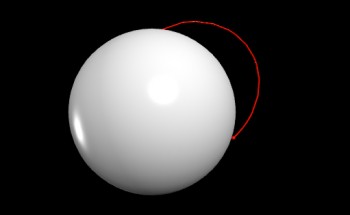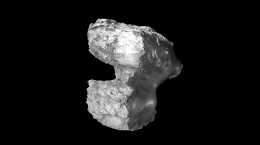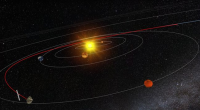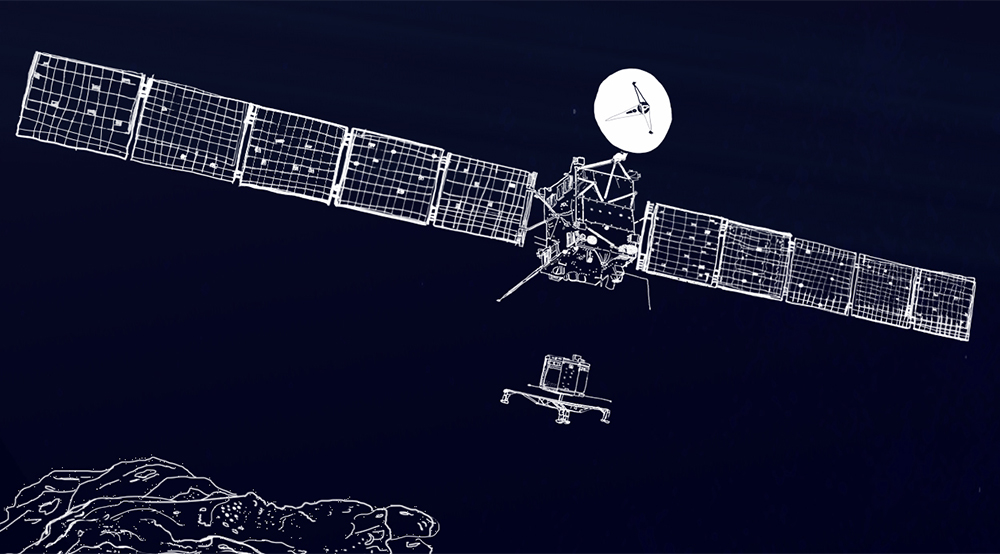An interesting update today by Professor Rhett Allain, who wonders – as we all do – whether you could jump off 67P/C-G and make it into orbit. Or even walk on the (dusty) surface..?
If an object at the surface of a gravitational object has a large enough speed, the object can move away from that object such that it will never “fall back” to the surface. The speed at which an object can “escape” is called the escape velocity.
What if an astronaut jumped straight up? How high would this astronaut rise before falling back down? This isn’t too difficult. Let me start by assuming that the astronaut doesn’t go high enough such that the gravitational field is mostly constant. What is the gravitational field on the surface of this comet? Since I have assumed a spherical comet, I can use the gravitational force for a point mass.
Read full calculations and Rhett’s complete post over at his dotphysics blog.
Read Rhett’s guest post, “Could you jump onto a comet?” right here in the Rosetta blog.










Discussion: 4 comments
How to get into a circular orbit, and back
Basics:
– By F = m a and v = a t, we get v = F t / m. For two orthogonal velocities v_1 and v_2, a fixed time interval t, and a fixed mass m, a force vector F=(F_1,F_2) we get
v_1 / v_2 = F_1 / F_2.
– / equals sqrt(2).
To get into a circular orbit just over the surface perform the following two steps:
1. First jump vertically with 0.9 times the escape velocity, and wait until you fall back to the surface.
2. With an angle of 51.8442° relative to the surface point your force, with contact to the surface, and slow down yor vertical velocity component to zero.
Physics underlying step 2:
With v_e = escape velocity, vertical delta v_2 = 0.9 v_e. Horizontal delta v_1 should be v_e/sqrt(2).
Hence delta v_2 / delta v_1 = 0.9 sqrt(2).
This velocity quotient equals the force quotient (see basics).
The arcus tangent 51.8442° of this quotient is the angle you need to transform the given vertical velocity of 0.9 v_e to the neded horizontal velocity of sqrt(2) v_e.
delta F_2 / delta F_1 = 0.7857 is the coefficient of static friction you need, well below the (assumed) available 0.9.
The orbit is just over the surface, so don’t stretch your knees while orbiting. By inverting the steps you’ll get back to stand, whenever you want.
That’s one of the more elegant of infinitely many solutions.
The second basics should have been
– “Escape velocity” / “velocity of circular orbit” equals sqrt(2).
It is great experiment !
I am a bit concerned about the difference between ‘weigth’ and ‘mass’. There is no problem standing on the surface, you weight almost nothing.
Falling and coming to a stop is a bit different. Now it is a matter (sic) of mass.
Given that the comet has an average density of about a tenth of water (like whipped cream or even fluffier) I would be afraid that the danger is not so much damage but, simply sinking deeply below the surface.
Is the surface of the comet strong enough to stop the lander ?
Groeten, Henk Smid
saw the documentery it was amazing